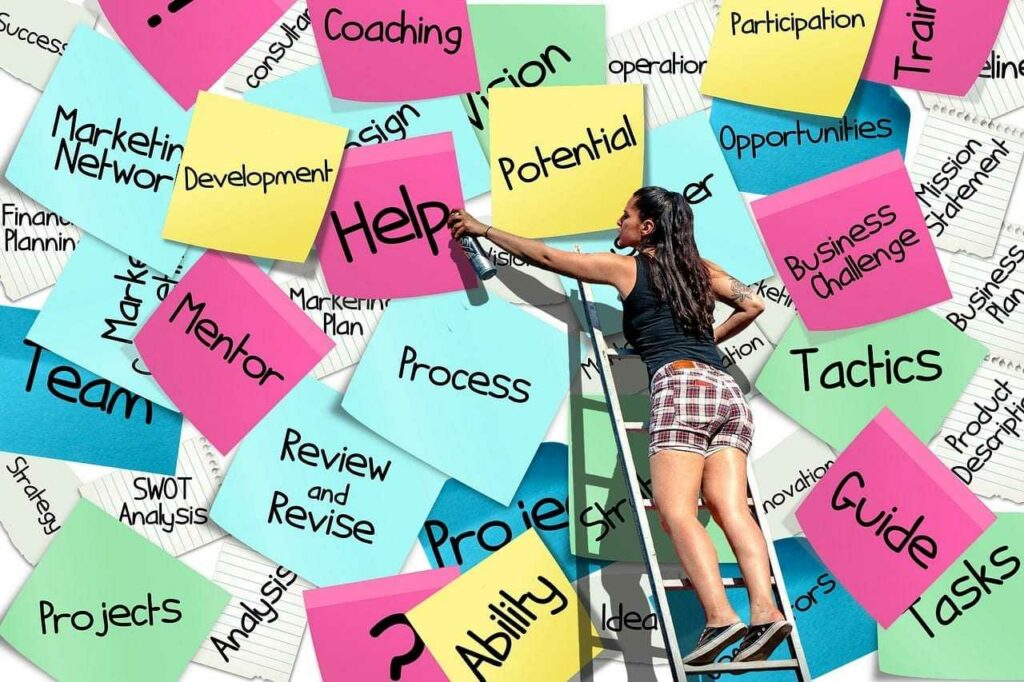In this article we present a pattern of how change processes work. Understanding this can help you understand your situation and discover new opportunities for action.
Everyone has experienced it themselves, now we are all experiencing it collectively with the Corona pandemic: change. For some an enemy, for others a welcomed friend. Some have learned to deal with change and see the opportunity in it. For others it is a great challenge.
The area of professional change is particularly precarious for many because it is connected with too much. We often form our identity (also) through the profession. In Germany, one of the most frequently asked questions is probably “And? What are you doing?”.
At the same time, a professional change really takes it out of us because very existential questions and fears may arise: “Do I have enough money?” Or “Am I good enough at all?”. When a change is so profound for us, it is usually particularly difficult to see things from the meta perspective. A model can help with this. It can help to determine your own point of view and discover new perspectives.
Richard K. Streich’s change management model – based on professional reorientation:
1. Shock
Even if we suspect change, the actual change (e.g. dismissal, job cuts or the decision to leave) usually comes as a surprise. It is therefore partly unexpected for our human organism and a shock. This is more serious, the stronger the change and the lower the perceived capacity to cope with it. It is clear that things cannot continue 100% as before.
2. Negation
The shock is often followed by a negative response and a negative attitude. People don’t want to acknowledge the change. Now sentences like “I cannot believe it!”, “This can’t be true!” Or “They can’t do that! Not with me!” and “I can’t do it”. It is also quite possible that groups of people are now forming against the measures announced. All of this is based on the fear of the unknown, on the fear of losing familiar and well-known structures
3. (Rational) Insight
In this phase, the ratio is brought on board: information is made known, the reasons for the change are explained and decision-makers are available to answer questions. In the best case, these explanations are understandable and lead to a rational insight into the new measures. One understands rationally why a professional reorientation is now important or pending. It is often recognized that the change is inevitable or even necessary. Nevertheless, contradictions and counter-arguments are sought loudly and tend to be short-term solutions.
4. (Emotional) Acceptance
Now, in addition to the rational insight into the changes, there is also emotional acceptance. The change is no longer just “out there”, but is also perceived in one’s own life. This means that it was recognized and accepted that you have to change yourself and that something changes in your own environment. This requires new skills and behaviors, new processes have to be rehearsed. And it also means letting go of the old. First of all, you then feel incompetent and the fear of not making it can arise. Especially in this phase, many coachees come to us to be accompanied professionally. And that makes sense, because often you don’t even know where to start in this new situation or what is important now. Allowing yourself enough time here and also including the outside perspective makes a lot of sense.
5. Testing
Now learning begins and you tend to be curious. You try to deal with the new requirements and try new ways. New positions are researched, further training is started, applications are written, etc. Some of the new attempts are successful, others are not. You learn through reflection. As a result, you gain more confidence in your own competencies and take further steps or try out other things. In addition, this process makes it increasingly clear what you really want and need. It is a chance to find more about yourself.
6. Knowledge
Now learning begins and you tend to be curious. You try to deal with the new requirements and try new ways. New positions are researched, further training is started, applications are written, etc. Some of the new attempts are successful, some are not – you learn through reflection. As a result, you gain more confidence in your own competencies and take further steps or try out other things. In addition, this process makes it increasingly clear what you really want and need. It is a chance to find more about yourself.
7. Integration
Through self-confidence and success, the change is then fully integrated and accepted in everyday life. The change is no longer perceived as such, but as normality and the new processes and behavior become more routine. Perhaps you are already in a new job or in further training, perhaps you have reinvented yourself or gained a new self-image.
Where are you currently in the change process?
How could this model help you take the next step?
This model is based on:



